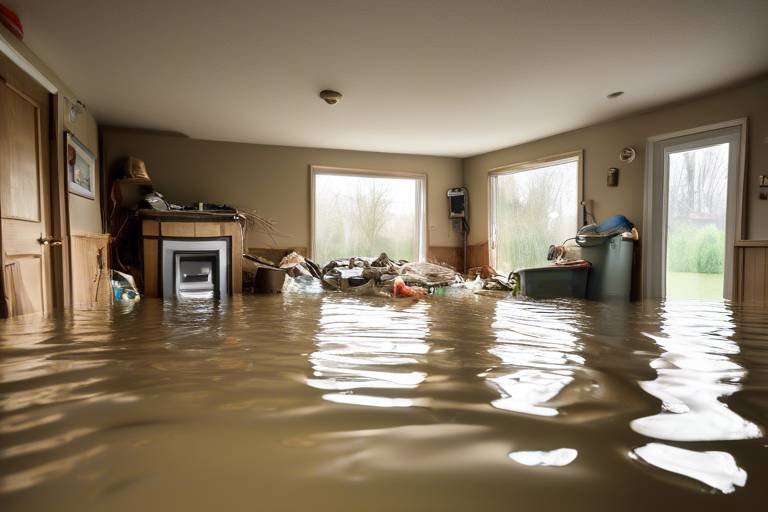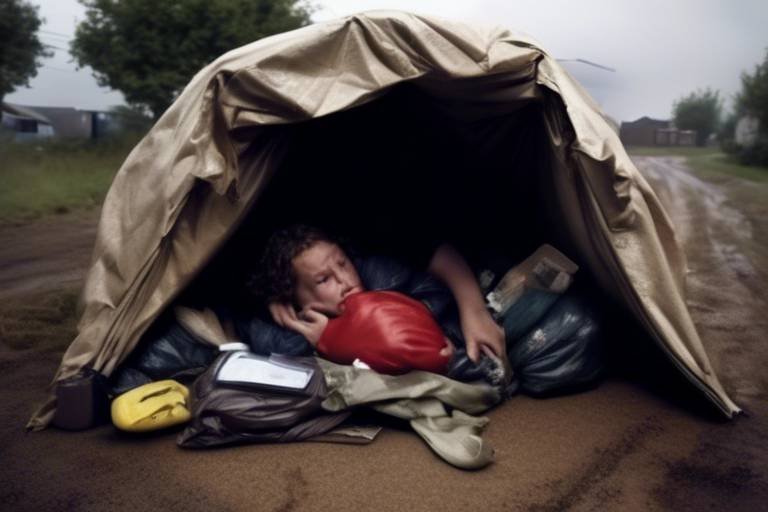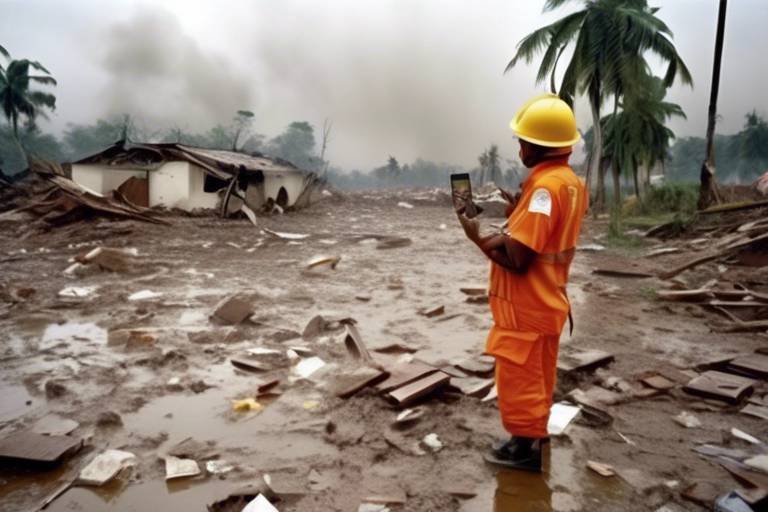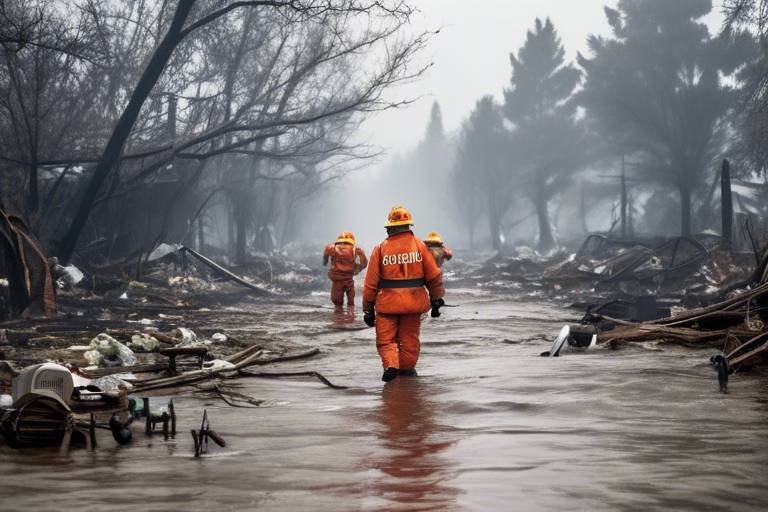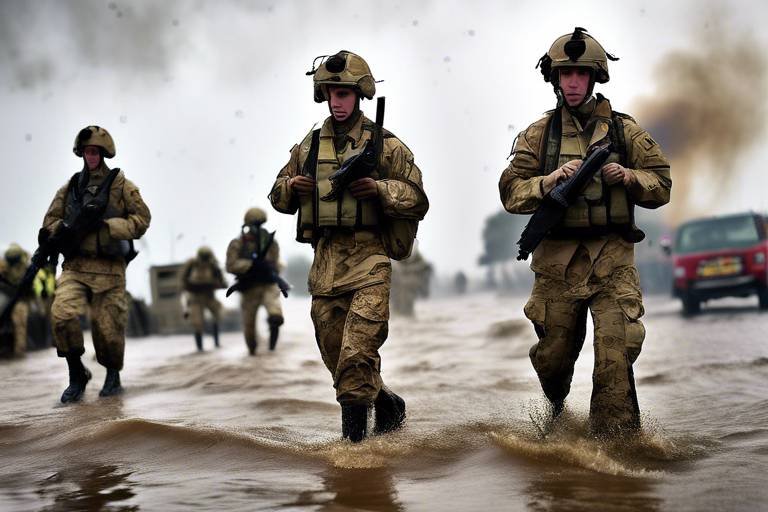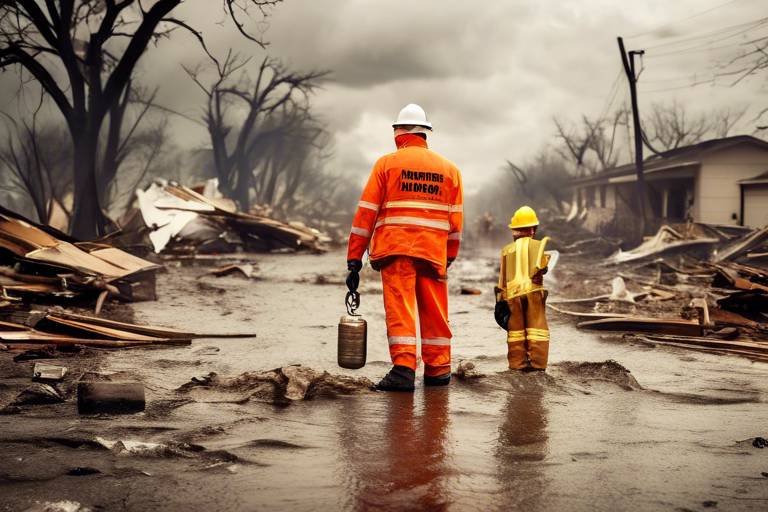Emergency Preparedness in the Workplace
In today's fast-paced world, the significance of emergency preparedness in the workplace cannot be overstated. Emergencies can strike at any moment, and being caught unprepared can lead to chaos, confusion, and even loss of life. Whether it's a natural disaster like a hurricane or a man-made crisis such as a fire, having a solid plan in place is essential for ensuring the safety of employees and the resilience of the organization. Think of emergency preparedness as a safety net; it may not always be visible, but when you need it, you’ll be grateful it’s there. In this article, we will delve into the importance of being prepared, the strategies to implement, and the resources necessary to cultivate a safe working environment.
Workplace emergencies can range from natural disasters to health crises, and understanding the different types is crucial for effective preparedness. For instance, consider the impact of a sudden fire alarm versus an unexpected earthquake. Each scenario demands a unique response, and recognizing these distinctions can help tailor your emergency plan. Furthermore, being aware of local risks—like flooding in a coastal area or severe storms in the Midwest—can guide your organization in prioritizing which emergencies to prepare for. It's not just about having a plan; it's about having the right plan for your specific environment.
Creating a comprehensive emergency plan involves several key components. First, you need to identify potential hazards that could affect your workplace. This might include everything from equipment malfunctions to external threats like severe weather. Once these hazards are identified, establishing clear protocols is essential. Employees should know exactly what to do in various scenarios, and this information should be easily accessible. Additionally, ensuring that all employees are informed and trained on these procedures is vital. After all, what good is a plan if no one knows how to execute it?
Conducting a thorough risk assessment helps organizations identify vulnerabilities and prioritize actions to mitigate risks. This process is essential for developing a tailored emergency response plan. By evaluating factors such as employee density, the nature of your business, and historical data on past emergencies, you can create a more effective strategy. It’s like piecing together a puzzle; the clearer the picture you have of potential risks, the better prepared you will be.
Identifying critical areas within the workplace, such as exits and assembly points, is vital for ensuring a swift and safe evacuation during emergencies. These areas should be well-marked and easily accessible. Consider conducting regular walk-throughs of your facility to familiarize employees with these locations. After all, in an emergency, every second counts!
Evaluating resource needs includes determining first aid supplies, communication tools, and emergency equipment necessary to support employees during a crisis. It’s essential to have a stockpile of basic supplies readily available, such as:
- First aid kits
- Flashlights
- Emergency contact lists
- Fire extinguishers
By being proactive and ensuring these resources are in place, you can significantly enhance your workplace's readiness for emergencies.
Regular training sessions equip employees with the knowledge and skills needed to respond effectively in emergencies, enhancing overall workplace safety and preparedness. Imagine being in a high-pressure situation where every moment matters. Proper training can mean the difference between chaos and calm. Consider incorporating simulations and role-playing exercises into your training programs to make them more engaging and effective.
Effective communication is essential during emergencies. Establishing clear protocols ensures that all employees are informed and can respond appropriately to unfolding situations. This might include designating a point person for communication or utilizing a mass notification system to relay important information quickly. Remember, in times of crisis, clarity is key.
Leveraging technology, such as emergency alert systems and mobile apps, can enhance communication efforts and ensure timely information dissemination during crises. Imagine receiving an instant alert on your phone about a fire drill or severe weather warning. This immediacy can save lives and prevent panic. Investing in the right technology can make your emergency response more efficient and effective.
Regular drills and exercises help reinforce training and evaluate the effectiveness of the emergency plan, ensuring employees are familiar with procedures and can act swiftly when needed. These drills should mimic real-life scenarios to provide employees with a realistic experience. After each drill, gather feedback to identify areas for improvement. Remember, practice makes perfect!
Emergency plans should be reviewed and updated regularly to reflect changes in the workplace environment, employee roles, and emerging threats, ensuring ongoing effectiveness and relevance. Just like you wouldn’t drive a car without regular maintenance, your emergency plan requires periodic check-ups to remain functional. Schedule yearly reviews and make adjustments as necessary.
Gathering employee feedback after drills and emergencies can provide valuable insights for improving the emergency plan and addressing any concerns or gaps in preparedness. Employees are often the first responders in a crisis, so their input can be invaluable. Consider creating an anonymous feedback form to encourage honest and constructive criticism.
Keeping abreast of industry best practices and emerging trends in emergency preparedness can help organizations enhance their plans and ensure they are well-equipped to handle any crisis. Subscribe to relevant publications, attend workshops, and network with other professionals in the field. Knowledge is power, and staying informed can make all the difference.
- What should be included in an emergency plan? An emergency plan should include hazard identification, evacuation procedures, communication protocols, and training requirements.
- How often should emergency drills be conducted? It's recommended to conduct emergency drills at least twice a year to ensure preparedness.
- Who is responsible for emergency preparedness in the workplace? While everyone plays a role, it’s typically the responsibility of a designated safety officer or team.
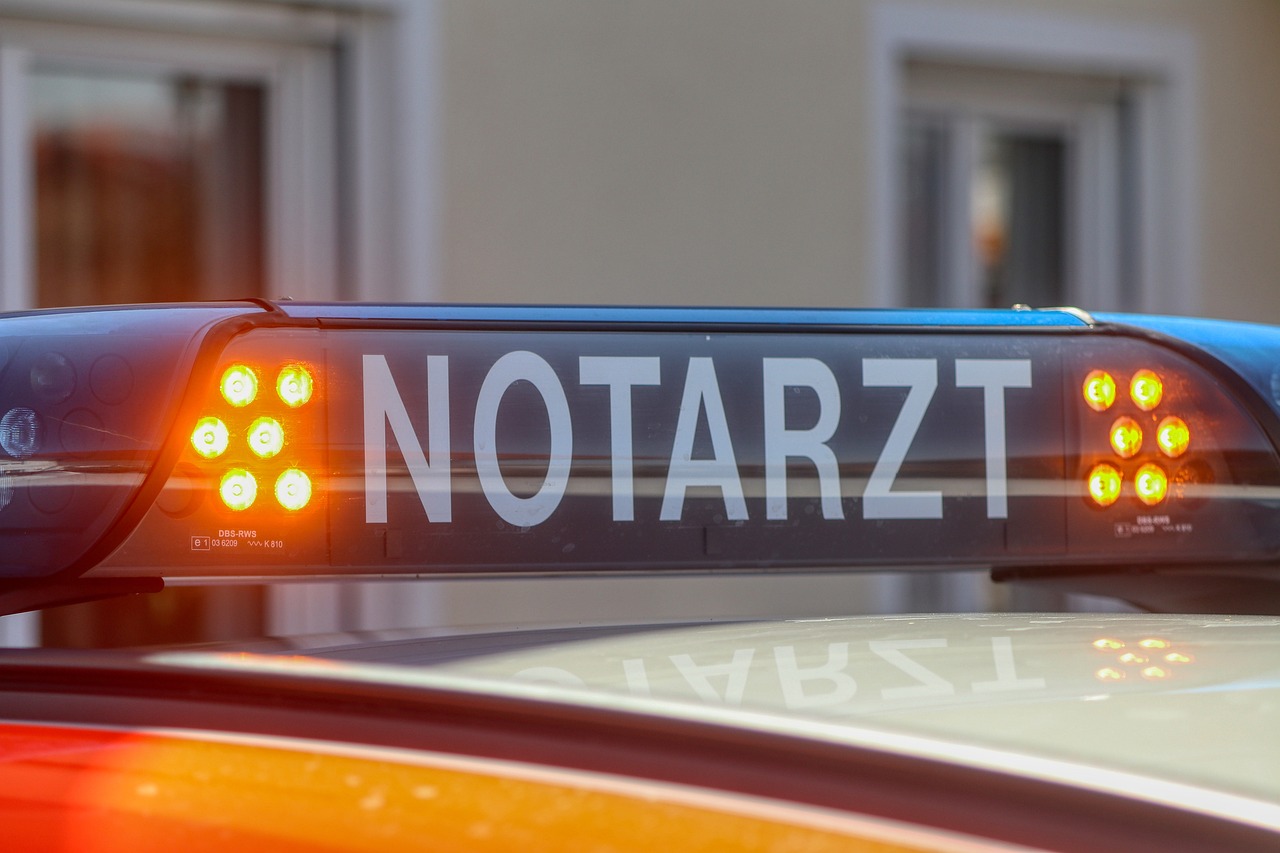
Understanding Workplace Emergencies
Workplace emergencies can strike at any moment, and their impacts can range from minor inconveniences to catastrophic events that threaten lives and property. Understanding the different types of emergencies that could occur in your workplace is not just a good idea—it's essential for ensuring safety and preparedness. From natural disasters like earthquakes and floods to man-made crises such as fires or chemical spills, the unpredictability of emergencies makes it imperative to be ready for anything. But how can you effectively prepare your team for such varied threats?
To start, it's important to recognize that emergencies can be classified into several categories. These include:
- Natural Disasters: Events like hurricanes, tornadoes, or earthquakes that are caused by environmental factors.
- Technological Incidents: Situations involving equipment failure, cyberattacks, or hazardous material spills.
- Human-Caused Events: Scenarios such as workplace violence, terrorism, or civil disturbances.
- Health Crises: Outbreaks of illnesses or pandemics that can impact workforce availability and safety.
Each type of emergency requires a unique approach to preparedness. For instance, a natural disaster might necessitate a focus on evacuation routes and shelters, while a health crisis could require protocols for hygiene and medical response. Understanding the specific risks associated with your workplace environment is crucial in developing a tailored response plan. This means not only identifying potential threats but also considering the geographical location, the nature of your business, and the demographics of your workforce.
Moreover, it's vital to foster a culture of awareness among employees. Encourage them to participate in discussions about potential risks and share their insights on what could go wrong. This collaborative approach not only enhances the preparedness plan but also empowers employees, making them feel involved and valued. Remember, an informed employee is often the first line of defense in an emergency situation.
In conclusion, understanding workplace emergencies is about more than just recognizing potential threats; it’s about creating a proactive strategy that involves everyone. By identifying the types of emergencies that could occur and planning accordingly, you set the stage for a safer and more resilient workplace. After all, in the face of uncertainty, knowledge and preparation are your greatest allies.

Developing an Emergency Plan
Creating a comprehensive emergency plan is not just a checkbox exercise; it’s a vital process that can make all the difference in ensuring the safety of employees during a crisis. Imagine your workplace as a ship sailing through unpredictable waters. An emergency plan is your navigational chart, guiding you safely through storms. To develop this plan effectively, you first need to identify potential hazards. These can range from natural disasters, such as earthquakes or floods, to man-made incidents like fires or active shooter situations. The more you know about what could go wrong, the better prepared you'll be.
Next, it’s crucial to establish clear protocols for various emergency scenarios. This means determining who is responsible for what during an emergency. For instance, designate specific individuals as safety officers who will lead the response efforts. They should be trained to manage situations calmly and effectively. Additionally, ensure that all employees are informed about these protocols. It’s not enough to just have a plan; everyone must know their roles and responsibilities. A well-informed team can act swiftly, reducing confusion and panic.
Another important aspect of your emergency plan is the creation of a detailed evacuation strategy. This involves not only identifying critical areas within the workplace, such as exits and assembly points, but also ensuring that these areas are easily accessible. Think of it this way: if a fire breaks out, you wouldn’t want employees scrambling around in confusion, right? Instead, they should know exactly where to go. Conducting regular walkthroughs can help familiarize everyone with these routes.
Moreover, evaluating resource needs is essential. This means assessing what first aid supplies, communication tools, and emergency equipment are necessary to support employees during a crisis. For example, consider keeping a well-stocked first aid kit in a central location, along with emergency contact numbers readily available. This proactive approach can save precious time during emergencies.
To summarize, developing an emergency plan involves a multi-faceted approach:
- Identifying potential hazards
- Establishing clear protocols
- Creating an evacuation strategy
- Evaluating resource needs
By taking these steps, organizations can build a robust emergency plan that not only protects employees but also enhances organizational resilience. Remember, the goal is to turn chaos into calm, ensuring that when emergencies strike, everyone knows exactly what to do.
Q1: How often should we review our emergency plan?
A: It’s recommended to review your emergency plan at least annually or whenever there are significant changes in the workplace, such as renovations or new employees.
Q2: What should be included in training sessions for employees?
A: Training sessions should cover emergency procedures, evacuation routes, first aid training, and the use of emergency equipment.
Q3: How can we ensure that all employees are aware of the emergency plan?
A: Regular meetings, training sessions, and visual reminders like posters in common areas can help keep everyone informed.

Risk Assessment Techniques
This article explores the importance of emergency preparedness in the workplace, outlining key strategies, training, and resources necessary to ensure employee safety and organizational resilience during emergencies.
Workplace emergencies can range from natural disasters to health crises. Recognizing the types of emergencies that could occur is crucial for effective preparedness and response planning.
Creating a comprehensive emergency plan involves identifying potential hazards, establishing protocols, and ensuring all employees are informed and trained on procedures to follow during an emergency.
Conducting a thorough risk assessment is like taking a magnifying glass to your workplace—it allows you to spot vulnerabilities that might otherwise go unnoticed. It’s essential to identify hazards that could disrupt operations or endanger employees. The first step in this process is to evaluate the environment. This includes everything from physical layouts, like exits and equipment, to potential external threats, such as severe weather or nearby construction activities.
Next, organizations should prioritize the risks identified. Not all hazards are created equal, and some pose a greater threat than others. For instance, a fire hazard in a warehouse may require immediate attention compared to a minor slip hazard in a break room. To effectively prioritize, consider the following:
- Likelihood of Occurrence: How likely is it that a specific hazard will occur?
- Impact Severity: What would be the consequences if the hazard were to materialize?
- Vulnerability: How vulnerable is the organization to this hazard?
Once risks are prioritized, the next step is to develop a tailored emergency response plan. This plan should address the specific vulnerabilities identified during the assessment and outline clear steps for mitigation. For example, if a workplace is at risk for flooding, the plan might include relocating critical equipment to higher ground and establishing a clear evacuation route.
In addition to identifying and prioritizing risks, it’s vital to involve employees in the assessment process. Employees often have firsthand knowledge of the workplace and can provide insights that management may overlook. Conducting workshops or brainstorming sessions can be an effective way to gather input and foster a culture of safety.
Finally, remember that risk assessment is not a one-time activity. The workplace is dynamic; new risks can emerge, and existing ones can evolve. Regularly reviewing and updating the risk assessment ensures that the organization remains prepared for any situation. This can be achieved through scheduled assessments, keeping up with industry trends, and incorporating feedback from employees after drills and emergencies.
Effective communication is essential during emergencies. Establishing clear protocols ensures that all employees are informed and can respond appropriately to unfolding situations.
Leveraging technology, such as emergency alert systems and mobile apps, can enhance communication efforts and ensure timely information dissemination during crises.
Regular drills and exercises help reinforce training and evaluate the effectiveness of the emergency plan, ensuring employees are familiar with procedures and can act swiftly when needed.
Emergency plans should be reviewed and updated regularly to reflect changes in the workplace environment, employee roles, and emerging threats, ensuring ongoing effectiveness and relevance.
Gathering employee feedback after drills and emergencies can provide valuable insights for improving the emergency plan and addressing any concerns or gaps in preparedness.
Keeping abreast of industry best practices and emerging trends in emergency preparedness can help organizations enhance their plans and ensure they are well-equipped to handle any crisis.
Q1: What is the first step in emergency preparedness?
A1: The first step is to conduct a thorough risk assessment to identify potential hazards and vulnerabilities in the workplace.
Q2: How often should emergency plans be reviewed?
A2: Emergency plans should be reviewed and updated regularly, ideally at least once a year or whenever there are significant changes in the workplace.
Q3: Why is employee training important?
A3: Regular training sessions equip employees with the knowledge and skills necessary to respond effectively in emergencies, enhancing overall safety and preparedness.
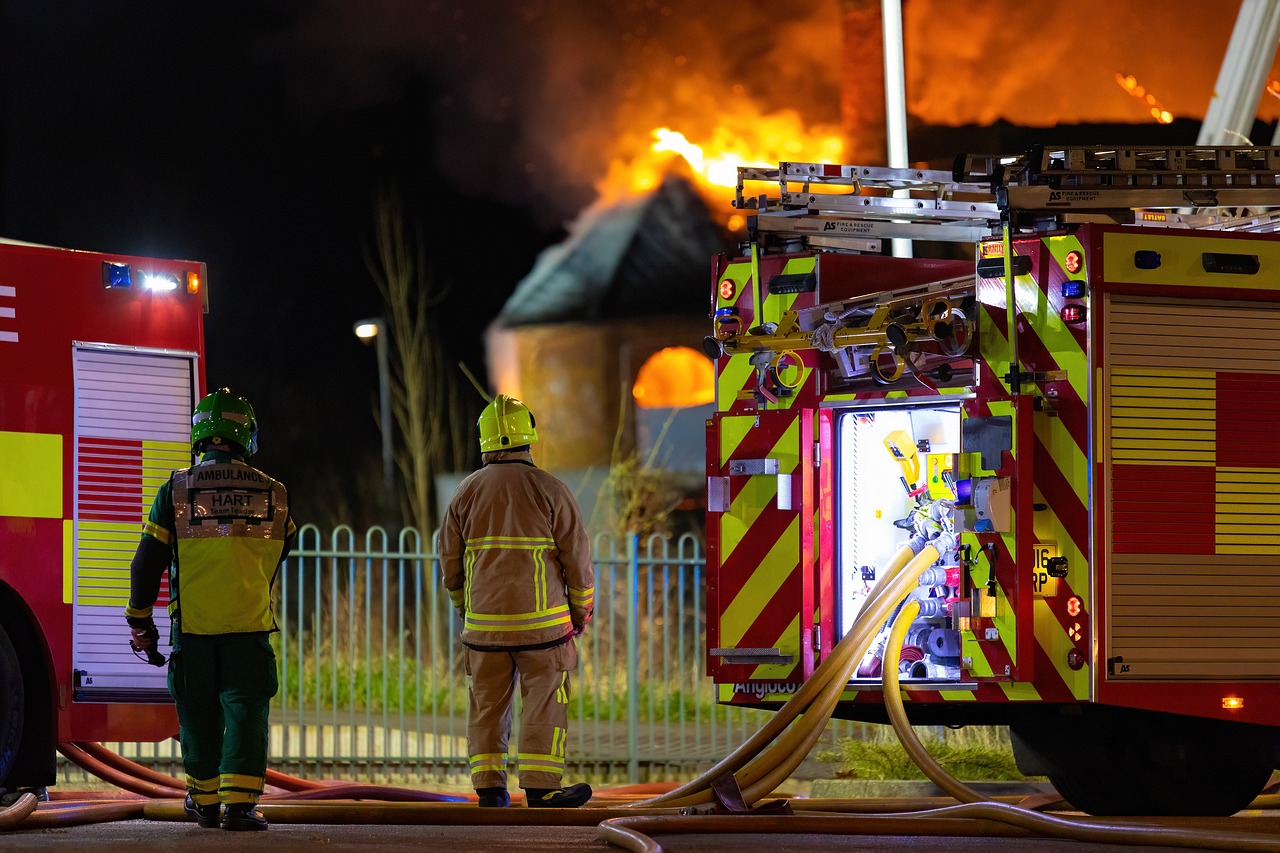
Identifying Critical Areas
When it comes to emergency preparedness, one of the most crucial steps is within the workplace. Think of your workplace as a ship navigating through stormy seas; if you don't know where the lifeboats are, you're setting yourself up for disaster. Critical areas include not only the obvious exits and assembly points but also locations that could become hazardous during an emergency, such as storage rooms or areas with heavy machinery.
To effectively identify these areas, it’s important to conduct a thorough walkthrough of the premises. During this assessment, pay attention to:
- Emergency Exits: Ensure that all exits are clearly marked and accessible at all times. Consider the flow of foot traffic during an evacuation.
- Assembly Points: Designate safe locations where employees can gather after evacuating. These should be away from the building and any potential hazards.
- Hazardous Material Storage: Identify any areas where flammable or toxic materials are stored. Ensure that these areas have proper signage and that employees know to avoid them in an emergency.
- First Aid Stations: Clearly mark the locations of first aid kits and other medical supplies. Employees should know where to find help in case of injury.
Additionally, consider creating a critical area map that highlights these locations. This map can serve as a visual guide for employees and can be included in training materials. By making this information readily accessible, you empower your workforce to act quickly and efficiently during emergencies.
Remember, the goal is to create a safe environment where everyone knows their roles and responsibilities. Regularly revisiting these critical areas, especially after any workplace changes, ensures that your emergency plan remains relevant and effective. It’s not just about having a plan; it’s about making sure that plan is actionable and understood by all.
- What should I do if I notice a blocked exit? Immediately report it to your supervisor or safety officer to ensure that it is cleared and accessible.
- How often should critical areas be reviewed? It’s recommended to review critical areas at least annually or after any significant changes to the workplace.
- Can employees be involved in identifying critical areas? Absolutely! Involving employees can provide valuable insights and enhance overall safety awareness.

Evaluating Resource Needs
When it comes to ensuring the safety of employees during an emergency, is a crucial step that cannot be overlooked. Think of it as packing for a road trip; you wouldn't want to hit the road without the essentials, right? Similarly, in the workplace, having the right resources on hand can mean the difference between chaos and calm during a crisis. This evaluation process involves a careful examination of both physical and logistical resources that are necessary to support employees effectively.
First and foremost, it's essential to identify first aid supplies. This includes not only basic items like band-aids and antiseptic wipes but also more advanced medical supplies such as defibrillators and emergency medication. Every workplace should have a designated first aid kit that is easily accessible and regularly stocked. Additionally, it’s wise to ensure that someone is trained in first aid procedures, as having the supplies is only half the battle.
Next, let’s talk about communication tools. In an emergency, clear and immediate communication can save lives. Consider implementing a multi-channel communication strategy that incorporates various tools like:
- Emergency alert systems
- Two-way radios for on-site personnel
- Mobile apps designed for crisis management
By utilizing these tools, organizations can ensure that employees receive timely updates and instructions, which can significantly reduce panic and confusion.
Moreover, evaluating the need for emergency equipment is vital. This could include items like fire extinguishers, emergency lighting, and evacuation chairs for individuals with mobility challenges. Conducting a thorough inventory of existing equipment and assessing whether additional items are necessary will help create a more robust emergency response framework.
Finally, consider the logistics involved in deploying these resources. Ask yourself: How quickly can supplies be accessed? Are there any barriers to getting to these resources during an emergency? By addressing these questions, organizations can identify potential bottlenecks and streamline their emergency response efforts.
In summary, evaluating resource needs is not just a one-time task; it should be a continuous process that adapts to the changing dynamics of the workplace. Just like a gardener tends to their plants, organizations must nurture their emergency preparedness resources to ensure they are ready when the unexpected occurs.
Q: What should be included in a first aid kit for the workplace?
A: A comprehensive first aid kit should include items like adhesive bandages, antiseptic wipes, gauze pads, a CPR face shield, scissors, tweezers, and any necessary medications for staff members.
Q: How often should emergency drills be conducted?
A: It's recommended to conduct emergency drills at least twice a year. However, the frequency can depend on the type of workplace and the specific risks involved.
Q: What are the key components of an effective emergency communication plan?
A: An effective emergency communication plan should include clear protocols for notifying employees, designated communication channels, and regular updates during a crisis.

Training Employees
Training employees is not just a box to tick off on a to-do list; it’s a critical investment in safety and preparedness that can make all the difference during an emergency. Imagine being in a high-pressure situation where every second counts. Wouldn’t you want your team to know exactly what to do? Regular training sessions are essential for equipping employees with the necessary skills and knowledge to respond effectively during emergencies. This proactive approach not only enhances workplace safety but also fosters a culture of preparedness that can significantly reduce panic and confusion when crises strike.
One of the key components of employee training is ensuring that everyone understands the specific emergency procedures relevant to their roles. This includes familiarizing them with evacuation routes, assembly points, and the use of emergency equipment. For instance, consider the importance of knowing how to operate a fire extinguisher. Such knowledge can be the difference between a minor incident and a full-blown disaster. To facilitate this, organizations can offer hands-on training sessions that simulate real-life scenarios, allowing employees to practice their responses in a controlled environment.
Moreover, training should not be a one-time event. Just as technology and workplace dynamics evolve, so too should emergency preparedness training. Regular refresher courses help keep the information fresh in employees' minds and allow for updates based on any changes in emergency protocols or workplace layouts. For example, if an office relocates or undergoes renovations, it is crucial to re-evaluate and update the training materials accordingly.
Additionally, organizations can enhance their training programs by incorporating various learning methods to cater to different learning styles. Some employees may prefer hands-on training, while others might benefit from visual aids or online courses. A blended approach can be particularly effective in engaging employees and ensuring that the training resonates with everyone. Here are a few effective training methods:
- Interactive Workshops: These allow employees to engage directly with trainers and practice emergency procedures.
- Online Training Modules: Flexible and accessible, these can be taken at the employee's convenience.
- Simulation Drills: Realistic drills that mimic emergency situations can help employees learn how to respond under pressure.
In conclusion, investing in employee training is not merely a regulatory requirement; it's a commitment to creating a safer workplace. By empowering employees with the right skills and knowledge, organizations can enhance their overall emergency preparedness, ensuring that when the unexpected happens, they are ready to face it head-on.
Q1: How often should emergency training be conducted?
A1: Ideally, emergency training should be conducted at least once a year, with refresher courses and drills held more frequently to keep information fresh and relevant.
Q2: What should be included in the emergency training program?
A2: The program should cover emergency procedures, evacuation routes, use of emergency equipment, first aid basics, and specific roles and responsibilities during an emergency.
Q3: How can we measure the effectiveness of our training?
A3: Effectiveness can be measured through feedback from employees, assessments after training sessions, and performance during drills and simulations.

Establishing Communication Protocols
When it comes to emergencies in the workplace, effective communication can be the difference between chaos and order. Imagine a fire alarm blaring; if employees don’t know how to respond, panic can easily set in. Establishing clear communication protocols is essential to ensure that everyone knows what actions to take during a crisis. This means creating a system that allows for rapid information sharing, ensuring that all employees are kept in the loop, and that the right messages reach the right people at the right time.
First and foremost, it’s important to determine the communication channels that will be utilized during an emergency. These could include:
- Text alerts
- Email notifications
- Public address systems
- Social media updates
Each of these channels has its strengths and weaknesses, so it’s crucial to choose the ones that best fit the organization’s needs. For instance, text alerts may be the quickest way to reach employees on the go, while email notifications can provide more detailed instructions.
Next, clarity is key. All communication should be concise and straightforward. Employees should not have to decipher complicated jargon during a crisis. Instead, use simple language that gets straight to the point. For example, instead of saying, “Please proceed to the nearest exit in an orderly fashion,” a more direct approach would be, “Evacuate immediately through the nearest exit.”
Additionally, it’s vital to establish a chain of command for communication. Who will be the primary spokesperson during an emergency? Who will relay information to employees? By designating specific roles, organizations can prevent mixed messages and ensure that information flows smoothly. This chain of command should be communicated to all employees so that they know whom to turn to for updates.
Furthermore, training plays a significant role in ensuring that communication protocols are understood and followed. Regular drills not only familiarize employees with emergency procedures but also reinforce the communication channels and protocols in place. During these drills, it’s a good idea to simulate communication breakdowns to test the effectiveness of the established protocols and identify areas for improvement.
Lastly, organizations should consider leveraging technology to enhance communication during emergencies. There are numerous tools available that can automate alerts and notifications, making it easier to disseminate information quickly and efficiently. For instance, emergency alert systems can send out mass notifications to employees’ phones and emails simultaneously, ensuring that no one is left uninformed.
In summary, establishing robust communication protocols is a critical component of emergency preparedness in the workplace. By ensuring clarity, designating communication roles, training employees, and utilizing technology, organizations can enhance their response to emergencies and protect their most valuable asset—their people.
- Why are communication protocols important during emergencies? Communication protocols ensure that all employees know what to do and where to go, reducing confusion and panic.
- How often should communication protocols be reviewed? Communication protocols should be reviewed at least annually or whenever there are significant changes in the workplace.
- What technology can help improve communication during emergencies? Emergency alert systems, mobile apps, and public address systems can all enhance communication efforts during crises.

Utilizing Technology
In today's fast-paced world, technology plays a pivotal role in enhancing emergency preparedness within the workplace. With the right tools at your disposal, organizations can streamline communication, improve response times, and ensure that every employee is informed and ready to act during a crisis. But how exactly can technology be harnessed to bolster safety measures? Let's dive into some key aspects.
One of the most effective ways to utilize technology is through the implementation of emergency alert systems. These systems can send out immediate notifications to all employees via text messages, emails, or even mobile app alerts. Imagine a scenario where a fire alarm goes off—within seconds, everyone in the building receives a message detailing the situation and the necessary actions to take. This rapid dissemination of information can be the difference between chaos and organized response.
Moreover, mobile applications designed for emergency preparedness can serve as a central hub for all emergency protocols. These apps often include features such as:
- Emergency contacts
- First aid instructions
- Evacuation routes
- Real-time updates during emergencies
By having all this information readily available at their fingertips, employees can remain calm and focused, knowing they have access to critical resources when it matters most.
Another exciting development in this realm is the use of geolocation technology. In the event of an emergency, knowing the precise location of all employees can significantly aid in rescue operations and ensure that no one is left behind. Companies can implement systems that track employee locations through their mobile devices, allowing safety personnel to quickly assess who needs assistance and where to direct their efforts.
But it doesn't stop there! Virtual reality (VR) and augmented reality (AR) tools are also making waves in training scenarios. By simulating emergency situations, employees can practice their responses in a safe environment. This not only enhances their confidence but also helps them retain critical information about emergency procedures. Think of it as a flight simulator for workplace emergencies—immersive training that prepares employees for real-life situations without the associated risks.
As we embrace these technological advancements, it's crucial to remember that they should complement, not replace, traditional training methods. Technology should be seen as an enhancer, providing additional layers of safety and preparedness. Regular updates and maintenance of these systems are essential to ensure they function optimally when needed.
In conclusion, utilizing technology in emergency preparedness can transform how organizations respond to crises. By leveraging advanced communication tools, mobile applications, geolocation tracking, and immersive training methods, workplaces can create a culture of safety that empowers employees to act decisively and effectively during emergencies. After all, when it comes to safety, being prepared is the best strategy!
Q1: What types of technology can be used in emergency preparedness?
A1: Various technologies can be utilized, including emergency alert systems, mobile applications, geolocation tracking, and virtual reality training tools. Each of these plays a unique role in enhancing communication and preparedness during emergencies.
Q2: How can I ensure my employees are trained on these technologies?
A2: Regular training sessions should be conducted to familiarize employees with the technology. This includes hands-on practice with emergency alert systems and mobile apps, as well as simulations using VR tools to reinforce learning.
Q3: Is it necessary to update emergency technology regularly?
A3: Yes, it is essential to review and update emergency technologies regularly. This ensures that all systems are functioning correctly and that employees are aware of any changes in protocols or tools.
Q4: Can technology replace traditional emergency plans?
A4: No, technology should complement traditional emergency plans. While it enhances communication and training, a solid emergency plan is still crucial for effective response and safety management.

Conducting Drills and Exercises
When it comes to emergency preparedness, is not just a checkbox on a to-do list; it's a vital component of a robust safety strategy. Think of these drills as the rehearsal before the big performance. Just like actors practice their lines to ensure a flawless show, employees must engage in regular emergency drills to familiarize themselves with protocols and procedures. This practice not only builds confidence but also ensures that everyone knows what to do when the spotlight of an actual emergency shines.
Drills can take many forms, from simple fire drills to more complex scenarios involving natural disasters or health emergencies. Each type of drill serves a specific purpose, allowing employees to practice their responses in a controlled environment. For instance, a fire drill might focus on the quickest routes to exits, while a lockdown drill could emphasize communication and coordination among team members. By varying the types of drills, organizations can prepare their workforce for a wide range of potential emergencies.
Moreover, it’s crucial to evaluate the effectiveness of these drills. After each exercise, gather feedback from participants to understand what went well and what could be improved. This feedback loop is essential for refining emergency plans and ensuring they remain relevant and effective. A simple post-drill questionnaire can provide insights into employee perceptions and readiness. Consider asking questions like:
- Did you feel adequately prepared for the drill?
- Were the instructions clear and easy to follow?
- What challenges did you face during the drill?
Additionally, conducting drills helps to identify any gaps in the emergency plan. Perhaps an exit route was blocked, or some employees were unaware of their roles during the drill. These insights are invaluable and can lead to immediate improvements in safety procedures. It’s like fine-tuning a machine; regular checks and adjustments ensure everything runs smoothly.
To maximize the benefits of drills and exercises, consider the following best practices:
| Best Practice | Description |
|---|---|
| Frequency | Conduct drills at least twice a year to keep preparedness fresh in employees' minds. |
| Variety | Incorporate different types of emergencies to cover a broad spectrum of potential incidents. |
| Realism | Make drills as realistic as possible to enhance employee engagement and preparedness. |
| Feedback | Collect and analyze feedback to continuously improve the emergency response plan. |
In conclusion, conducting drills and exercises is a cornerstone of emergency preparedness in the workplace. They not only equip employees with the necessary skills to respond effectively but also foster a culture of safety and resilience. By treating these drills as essential practice rather than mere obligations, organizations can ensure that when an emergency does occur, their employees are ready to take action swiftly and confidently.
Q1: How often should emergency drills be conducted?
A1: It's recommended to conduct emergency drills at least twice a year, but more frequent drills may be necessary depending on the nature of the workplace and potential risks.
Q2: What types of drills should be included in an emergency preparedness plan?
A2: An effective plan should include a variety of drills, such as fire drills, lockdown drills, and natural disaster drills, to prepare employees for different types of emergencies.
Q3: How can employee feedback improve emergency preparedness?
A3: Gathering feedback after drills helps identify areas for improvement, ensuring that the emergency response plan remains effective and relevant to the needs of the organization.
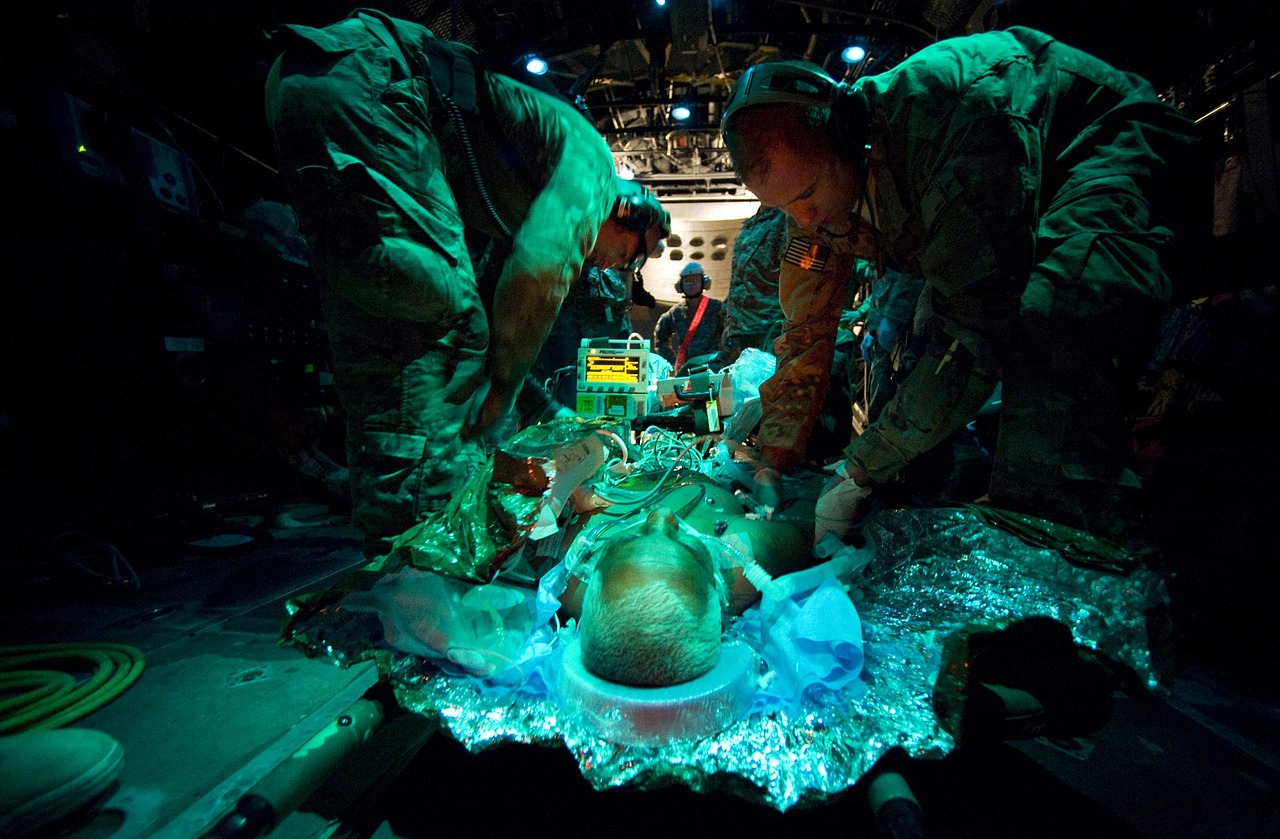
Reviewing and Updating Plans
When it comes to emergency preparedness, having a plan is just the beginning. is a critical step that ensures your organization remains resilient and adaptable in the face of ever-changing circumstances. Think of your emergency plan as a living document; it should evolve as your workplace grows, technologies change, and new threats emerge. Regular reviews not only keep the plan relevant but also reinforce a culture of safety within the organization.
One effective approach to reviewing emergency plans is to schedule regular assessments, ideally on an annual basis, or more frequently if significant changes occur. During these assessments, consider the following:
- Changes in the workplace: Have there been any alterations to the physical layout, such as new construction or renovations?
- New personnel: Are there new employees who need to be trained on emergency procedures?
- Emerging threats: Are there new risks that have developed in your industry or region, such as increased natural disasters or health crises?
In addition to these factors, it’s essential to incorporate feedback from employees. After drills or actual emergencies, gather insights on what worked well and what didn’t. This feedback can be invaluable in identifying gaps in the plan. For instance, if employees felt uncertain about evacuation routes, it may be time to revise those sections of the plan and provide additional training.
Moreover, staying informed about industry best practices can significantly enhance your emergency preparedness efforts. By attending workshops, engaging with professional organizations, or following relevant publications, you can learn about innovative strategies and technologies that can be integrated into your emergency plan. For example, some organizations are now using advanced software to simulate emergencies and assess response effectiveness, which can provide a more comprehensive understanding of potential vulnerabilities.
Lastly, it’s important to document all changes made to the emergency plan. This documentation serves as a reference point for future reviews and ensures that everyone is on the same page regarding the current procedures. A simple change log can be created to track updates, which might include:
| Date | Change Description | Responsible Person |
|---|---|---|
| 01/15/2023 | Updated evacuation routes | John Doe |
| 03/10/2023 | Added new training session for employees | Jane Smith |
In conclusion, regularly reviewing and updating your emergency plans is not just a checkbox on a list; it’s a vital practice that can save lives and protect your organization. By fostering a proactive approach to emergency preparedness, you empower your employees and enhance your organization’s overall resilience.
Q: How often should we review our emergency plans?
A: Ideally, emergency plans should be reviewed at least once a year, or more frequently if there are significant changes in your workplace or new threats emerge.
Q: What should I include in my emergency plan?
A: Your emergency plan should include evacuation procedures, contact information for emergency services, designated assembly points, and protocols for specific emergencies relevant to your workplace.
Q: How can I gather employee feedback effectively?
A: You can conduct surveys, hold debriefing sessions after drills, or create an anonymous feedback box to encourage honest input from employees.

Incorporating Employee Feedback
When it comes to emergency preparedness, one of the most valuable resources at your disposal is the feedback from your employees. They are the ones who will be directly affected by any emergency situation, so their insights can provide a unique perspective on the effectiveness of your emergency plans. By actively seeking and incorporating employee feedback, organizations can create a more robust and effective emergency response strategy. But how do you go about gathering this feedback? It's simpler than you might think!
Firstly, consider implementing a structured feedback mechanism. This could be in the form of surveys or questionnaires distributed after drills or during safety meetings. Asking specific questions about what employees found confusing or what they felt could be improved can yield actionable insights. For example, you might ask:
- What aspects of the emergency plan were unclear to you?
- Were there any resources you felt were lacking during the drill?
- How comfortable do you feel with the evacuation routes and procedures?
Additionally, holding focus groups can foster a more open dialogue. Employees may feel more comfortable sharing their thoughts in a smaller, less formal setting. This can lead to deeper discussions about potential hazards and the effectiveness of current protocols. Remember, the goal is to create a culture of safety where employees feel empowered to voice their concerns and suggestions.
Moreover, it’s important to ensure that feedback is not only collected but also acted upon. After gathering insights, organizations should communicate back to employees about how their feedback is being utilized to improve emergency plans. This not only shows that their opinions are valued but also encourages ongoing participation in safety initiatives. For instance, if a common concern arises about the clarity of exit signs, take steps to enhance visibility and communicate these changes to the team.
Incorporating employee feedback is not a one-time effort; it should be an ongoing process. Regularly check in with employees, especially after major changes in the workplace or following significant incidents. This continuous loop of feedback and improvement can help to ensure that your emergency preparedness plans remain relevant and effective, ultimately fostering a safer workplace for everyone.
- Why is employee feedback important in emergency preparedness?
Employee feedback provides insights into the effectiveness of emergency plans and helps identify areas for improvement, ensuring that the plans are practical and user-friendly. - How often should we gather feedback?
Feedback should be gathered regularly, especially after drills, changes in procedures, or incidents, to keep the emergency plans updated and effective. - What methods can be used to collect feedback?
Surveys, focus groups, and informal discussions are great ways to gather employee feedback on emergency preparedness.

Staying Informed on Best Practices
In the ever-evolving landscape of workplace safety, is not just a good idea; it's a necessity. The world around us is constantly changing, and with it, the nature of emergencies and the strategies to handle them. Organizations must be proactive in seeking out the latest information and adapting their emergency plans accordingly. This means not only keeping up with regulatory changes but also being aware of new technologies, methodologies, and insights that can enhance safety protocols.
One effective way to stay informed is by participating in industry seminars and workshops. These events often feature experts who share their knowledge and experiences, providing valuable insights that can be directly applied to your workplace. Additionally, networking with other professionals in the field can lead to sharing of best practices that you might not have considered. Remember, learning from others' experiences can save your organization from making costly mistakes.
Moreover, subscribing to relevant publications and online resources can be incredibly beneficial. Many organizations and regulatory bodies offer newsletters that highlight recent developments in emergency preparedness. For instance, the Occupational Safety and Health Administration (OSHA) and the Federal Emergency Management Agency (FEMA) frequently publish updates and guidelines that can help you stay compliant and informed.
Another key aspect of staying informed is incorporating employee feedback into your emergency preparedness plans. After conducting drills or responding to an incident, take the time to gather insights from your team. They may have noticed gaps in the plan or have suggestions for improvements based on their experiences. This not only enhances the plan but also fosters a culture of safety where employees feel valued and heard.
In addition, consider creating a dedicated team responsible for monitoring best practices in emergency preparedness. This team can regularly review your current plans, research new trends, and ensure that your organization is always equipped with the most effective strategies. By making this a priority, you not only enhance your emergency response capabilities but also demonstrate a commitment to employee safety.
Lastly, don't forget the power of technology. There are numerous platforms and tools available that provide real-time updates on emergencies and best practices. Utilizing these resources can lead to quicker responses and better-informed decisions during critical situations. By integrating technology into your preparedness strategy, you can significantly improve your organization's resilience.
In summary, staying informed on best practices in emergency preparedness is a continuous journey. By engaging with industry experts, leveraging technology, and fostering a culture of feedback, organizations can ensure they are well-prepared to face any crisis that may arise.
- What are the key components of an emergency preparedness plan?
An effective emergency preparedness plan includes risk assessments, communication protocols, training sessions, and regular reviews and updates. - How often should emergency drills be conducted?
It is recommended to conduct emergency drills at least twice a year to ensure employees are familiar with procedures and can respond effectively. - Why is employee feedback important in emergency planning?
Employee feedback provides valuable insights that can help identify gaps in the plan and enhance overall preparedness. - How can technology improve emergency preparedness?
Technology can facilitate real-time communication, provide alerts, and offer resources that enhance response efforts during emergencies.
Frequently Asked Questions
- What types of emergencies should workplaces prepare for?
Workplaces should be prepared for a variety of emergencies, including natural disasters like earthquakes and floods, health crises such as pandemics, fires, and even workplace violence. Understanding the specific risks associated with your location and industry is crucial for effective preparedness.
- How do I create an effective emergency plan?
Creating an effective emergency plan involves several key steps: identify potential hazards, establish clear protocols for response, and ensure that all employees are informed and trained on these procedures. It's also important to regularly review and update the plan to reflect any changes in the workplace environment.
- What is a risk assessment, and why is it important?
A risk assessment is a systematic process of evaluating potential risks that could be involved in a projected activity or undertaking. This is important because it helps organizations identify vulnerabilities and prioritize actions to mitigate risks, tailoring the emergency response plan to specific needs.
- How often should employees receive training on emergency procedures?
Employees should receive training on emergency procedures at least once a year. However, additional training sessions may be beneficial, especially after any significant changes in the workplace or following an actual emergency. Regular drills help reinforce training and keep everyone prepared.
- What role does technology play in emergency preparedness?
Technology plays a vital role in enhancing emergency preparedness by facilitating communication. Emergency alert systems, mobile apps, and digital communication tools can ensure timely information dissemination during a crisis, helping employees respond quickly and effectively.
- Why are drills and exercises important?
Drills and exercises are essential for testing the effectiveness of your emergency plan. They provide employees with hands-on experience, reinforce training, and highlight areas that may need improvement, ensuring that everyone knows what to do in an actual emergency.
- How can I ensure my emergency plan stays relevant?
To keep your emergency plan relevant, it should be reviewed and updated regularly. Incorporating employee feedback after drills and emergencies can provide valuable insights, and staying informed on industry best practices will help you adapt to emerging threats.




